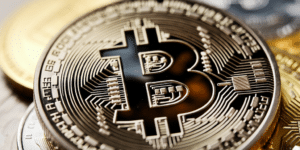Bitcoin Falls To New Lows As Stock Markets Correct – Is Something Wrong?

After hitting a peak on March 28, the S&P 500 rumbled, slipping below the 5,150-point threshold on April 12. Bitcoin (BTC) price also reacted negatively in the same time frame, so it makes sense to analyze if the drivers are there for the stock market correction and it also applies to cryptocurrencies.
The S&P 500's 2.9% drop from its peak of 5,333 may seem modest, but it's the first time in four weeks that the U.S. stock market index has traded below 5,120. High inflation has led investors to question the Federal Reserve's ability to effectively cut interest rates in 2024.
Rising inflation and tighter US Federal Reserve monetary policy are the drivers.
On April 12, major US financial institutions such as JPMorgan and Wells Fargo reported a 4 percent decline in quarterly net interest income. This figure shows the difference between what banks earn on their assets and what they pay out to customers. This issue reflects the challenges that small banks will face in 2023, according to Yahoo Finance.
JPMorgan CFO, Jeremy Barnum, said that customers are moving away from traditional savings accounts to higher-yielding options such as certificates of deposit (CDs). This shift helps explain why JPMorgan shares fell 5.7% on April 12, despite a 6% year-over-year increase in net profit for the first quarter. In addition, JPMorgan CEO Jamie Dimon pointed to the risks posed by geopolitical tensions and further tightening by the Fed.
The main reason for today's stock market decline is continued inflation, which has led to the central bank keeping interest rates high, reducing liquidity. However, this situation can be seen as inherently positive for Bitcoin, because like gold, the cryptocurrency benefits from being less of an asset. Gold reached an all-time high of $2,431 on April 12, but that alone did not raise market concerns.

On April 10, the yield on the U.S. Treasury's 5-year note rose to its highest level in five months, signaling investors' dissatisfaction with the rate of return below 4.5 percent given the inflation outlook. This situation has two main consequences: firstly, the government faces high costs when renovating its debt; Second, companies are discouraged from hiring and expanding because of more attractive fixed income returns.
As gold prices rise and investors seek higher yields in US Treasuries, this signals a lack of confidence in the economy. In such circumstances, regardless of inflation, it is challenging to argue for Bitcoin investments. While few market participants see Bitcoin as a safe haven, it's great to think that a cryptocurrency can flourish during a stock market crash.
If China's economic growth slows, the global economy could weaken.
In addition to the Federal Reserve's tight monetary policy and declining confidence in the U.S. economy, China is currently a major source of concern due to problems in the real estate sector and recent disappointing foreign trade figures. China reported a 7.5% year-on-year drop in exports in March. Analysts are concerned about overcapacity in some Chinese industries and do not expect a rapid recovery soon, largely due to the ongoing crisis in the property sector.
Related: Scam victims want China to return $4.3B worth of Bitcoin seized by UK police
On April 10, rating agency Fitch downgraded China's sovereign credit rating to negative as the country plans to issue $138 billion in long-term bonds to stimulate economic growth. Bloomberg reported on March 28 that banks in China reported a bad loan asset ratio of up to 5% by the end of 2023. Some of the region's biggest real estate developers, including Evergrande and Country Garden, recently declared bankruptcy.
China has introduced significant uncertainty into global markets, but its impact on the price of Bitcoin is uncertain. Still, if the S&P 500 continues to decline, it would be overly optimistic to expect investors to increase their crypto holdings.
This article does not contain investment advice or recommendations. Every investment and business activity involves risk, and readers should do their own research when making a decision.













